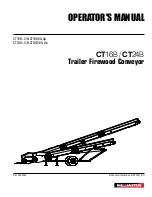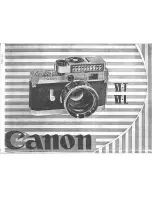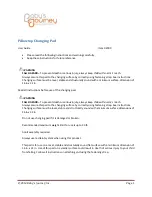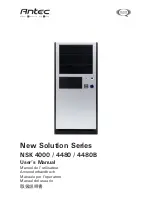
•
Do not attempt to mount a tire unless you have the proper
equipment and experience to do the job.
•
Have a qualified tire dealer or repair service perform
required tire maintenance.
•
When replacing worn tires, make sure they meet the
original tire specifications.
2.6.1 Hydraulic System Safety
•
Make sure that all the components in the hydraulic system
are kept clean and in good condition.
•
Make sure all components are tight, and that lines, hoses
and couplings are not damaged before applying pressure to
the system.
•
Do not use a hand to check for hydraulic
oil leaks. Hydraulic fluid escaping under
pressure can penetrate the skin causing
serious injury. Use a piece of cardboard.
•
Wear proper hand and eye protection
when searching for a high-pressure
hydraulic leak.
•
Seek medical attention immediately if injured by a
concentrated high-pressure stream of hydraulic fluid.
Serious infection or toxic reaction can develop from
hydraulic fluid piercing the skin surface.
•
Do not attempt any makeshift repairs to the hydraulic lines,
fittings or hoses by using tape, clamps, or cements. Doing
so can cause sudden failure and create a hazardous and
unsafe condition.
•
Relieve pressure on the hydraulic system before working
it. The hydraulic system operates under extremely high
pressure.
•
Replace any hydraulic hose immediately that shows signs
of swelling, wear, leaks, or damage before it bursts.
•
Check to make sure hydraulic hoses are not worn or
damaged and are routed to avoid chafing.
•
Never adjust a pressure relief valve or other pressure-
limiting device to a higher pressure than specified.
2.6.2 Engine Safety
• DO NOT
run engine in an enclosed area. Exhaust gases
contain carbon monoxide, which is an odorless and deadly
gas.
• DO NOT
place hands or feet near moving or rotating parts.
• DO NOT
choke carburetor to stop engine. Whenever
possible, gradually reduce engine speed before stopping.
• DO NOT
tamper with governor springs, governor links
or other parts which may increase the governed speed.
Engine speed is selected by the original equipment
manufacturer.
• DO NOT
check for spark with spark plug or spark plug wire
removed.
• DO NOT
crank engine with spark plug removed. If engine is
flooded, crank until engine starts.
• DO NOT
strike flywheel with a hard object or metal tool as
this may cause flywheel to shatter in operation. Use proper
tools to service engine.
• DO NOT
operate engine without a muffler or heat shield.
Inspect periodically and replace if damaged.
• DO NOT
operate engine with an accumulation of grass,
leaves, dirt or other combustible materials in the muffler
area.
• DO NOT
use this engine on any forest covered, brush
covered, or grass covered unimproved land unless a spark
arrester is installed on the muffler. The arrester must be
maintained in effective working order by the operator. In
the state of California the above is required by law (Section
4442 of the California Public Resources Code). Other states
may have similar laws. Federal laws apply on federal land.
• DO NOT
touch hot muffler, cylinder, or fins. Contact may
cause burns.
Be sure to:
•
Remove the wire from the spark plug when servicing the
engine or equipment to prevent accidental starting.
•
Keep cylinder fins and governor parts free of grass and
other debris which can affect engine speed.
•
Examine muffler periodically to be sure it is functioning
effectively. A worn or leaking muffler should be repaired or
replaced, as necessary.
•
Check fuel lines and fittings frequently for cracks or leaks.
Replace if necessary.
Safety
CT16B / CT24B
Trailer Firewood Conveyor
Safety
10
Summary of Contents for CT16B
Page 47: ......
Page 48: ...www wallensteinequipment com...











































